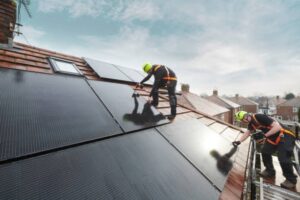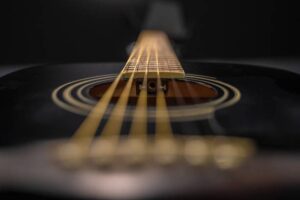Solar battery storage is one of the leading reasons Adelaide home and business owners opt to install solar power systems. It can lower their energy bills and give them power security in case of a blackout. For quality deep cycle solar batteries Adelaide, check this out.
Choosing suitable deep-cycle solar batteries can be challenging, but understanding their features can help you make the best choice for your home. Here are some of the most important things to keep in mind:
Long Lifespan
 Deep-cycle solar batteries have long lifespans, allowing them to be used for your home or business over time. They provide a cost-effective way to store renewable energy and reduce your dependence on grid electricity. They also make you eligible for SA Government battery incentives.
Deep-cycle solar batteries have long lifespans, allowing them to be used for your home or business over time. They provide a cost-effective way to store renewable energy and reduce your dependence on grid electricity. They also make you eligible for SA Government battery incentives.
Solar batteries come in a variety of types and sizes. Depending on your needs, you can choose from flooded lead acid, gel or AGM deep cycle batteries, or lithium.
The lifespan of a solar battery depends on how it is used and maintained. Keeping them clean and free of dirt, which can corrode the internal components, is essential.
The depth of discharge also impacts the longevity of a deep-cycle battery. It is recommended to only use a maximum of 50% of the capacity during each charge. This will extend the battery’s lifespan and help you get the most out of your investment.
High Energy Capacity
Solar batteries allow solar panels to store any excess energy they generate during the day, making them available at night or in a power outage. This energy security is one of the main reasons Adelaide homes and businesses install solar battery systems, helping to reduce electricity bills and contribute to a greener environment. For quality deep cycle solar batteries Adelaide, check this out.
Deep-cycle solar batteries have a high energy capacity and are designed to be charged and discharged frequently without damage. They also have a low self-discharge rate, meaning they retain their charge for longer.
Choosing a battery that will suit your solar system and energy needs is essential. This can be done by calculating your average energy usage (in kilowatt-hours) and determining the voltage of your solar panel kit.
It’s also worth checking your battery warranty. Some manufacturers offer extended warranties for their lithium batteries, which can be a good investment. Also, look for a battery that can be enrolled in a Virtual Power Plant (VPP) programme, which is essential if you want to benefit from the SA Government battery subsidy.
Wide Range of Applications
Deep cycle solar batteries in Adelaide store excess renewable energy when the sun is not shining. This extra electricity is converted into stored energy through chemical reactions inside the battery. When the battery is drained, it recharges by using the sunlight to energize the cells.
These batteries are also ideal for powering electric golf carts and vehicles like medical carts. They provide a steady supply of low yet consistent power levels over extended periods than traditional lead-acid batteries. For quality deep cycle solar batteries Adelaide, check this out.
The kWh capacity and the kW output often rate these batteries. kWh refers to the maximum amount of energy the battery can store, and kW is the speed at which it can discharge to run appliances in your home. Choose the best deep-cycle solar battery for your home by pairing it with a suitable inverter. Concorde Battery’s Sun Xtender line of green energy batteries is a good choice due to its superior construction and outstanding customer service.
Cost-Effective
Solar batteries provide a cost-effective way to store energy generated by your solar panels and use it at night and on cloudy days. This can help you save money on power bills and reduce your reliance on the electricity grid and carbon footprint.
Choosing the correct battery depends on your energy needs and the type of solar system you have. You’ll find many options, including flooded lead acid and lithium-iron-phosphate solar batteries. All have advantages and disadvantages, so choosing the one that’s right for you is essential.
Solar batteries are an essential part of a solar power system. They can help you save on your energy costs and be used to supply power during a blackout.

 Gibson’s history is a story of innovation and success. It started as Orville Gibson’s part-time hobby and has grown into an iconic American brand spanning multiple generations and styles of music. Gibson is credited with many of the significant innovations in guitars and is known worldwide for its quality and high-end sound.
Gibson’s history is a story of innovation and success. It started as Orville Gibson’s part-time hobby and has grown into an iconic American brand spanning multiple generations and styles of music. Gibson is credited with many of the significant innovations in guitars and is known worldwide for its quality and high-end sound.